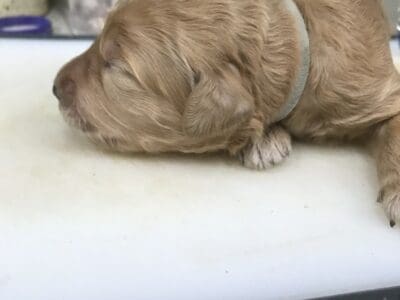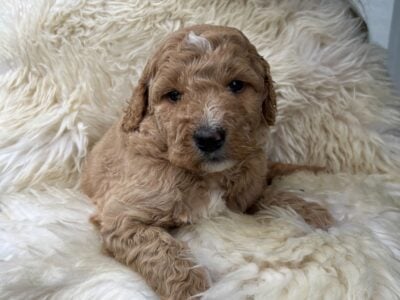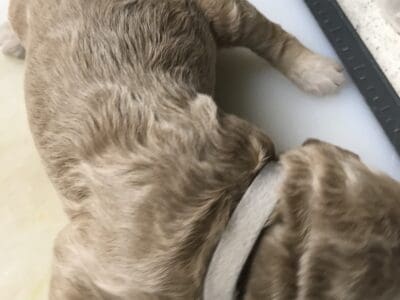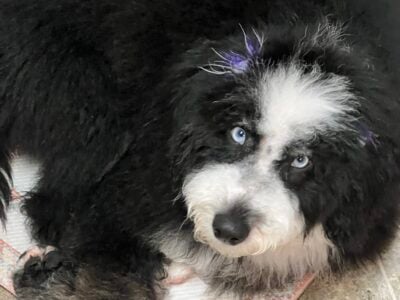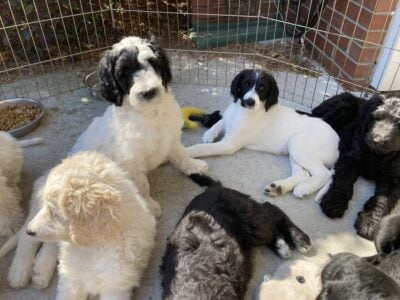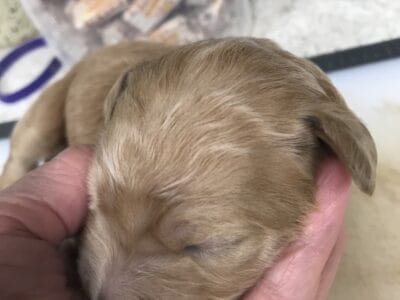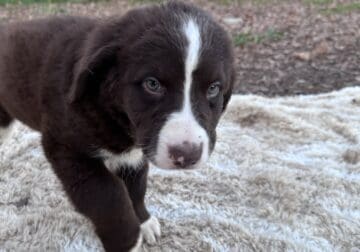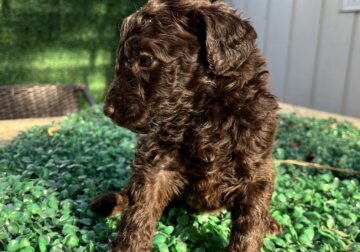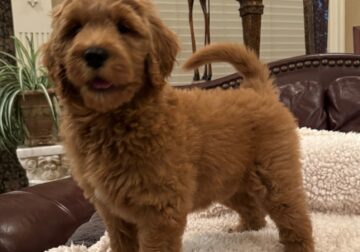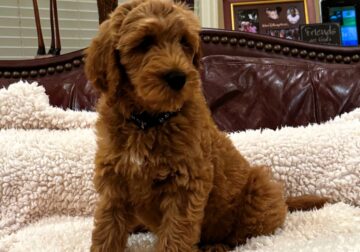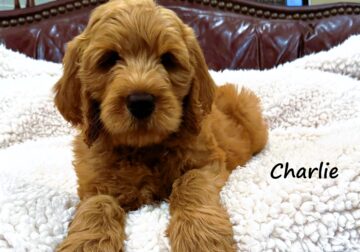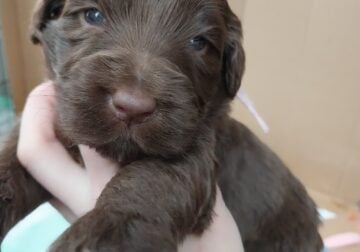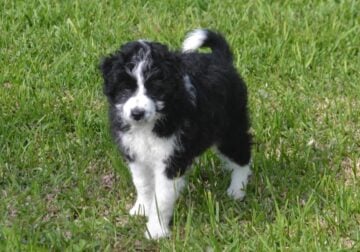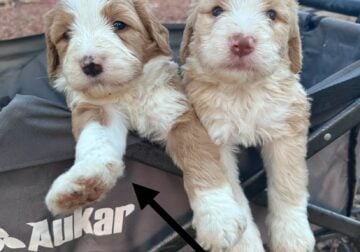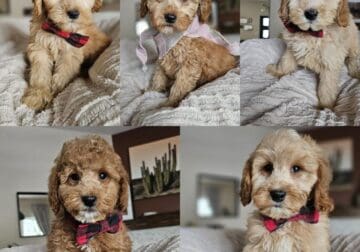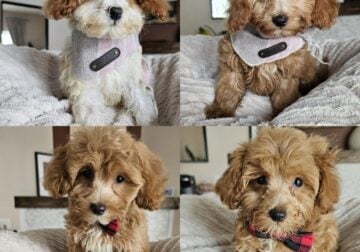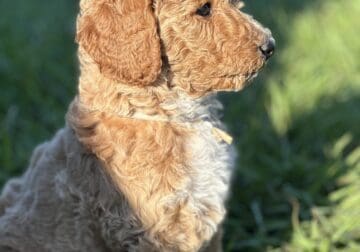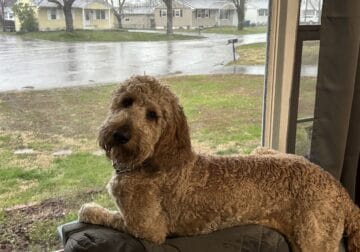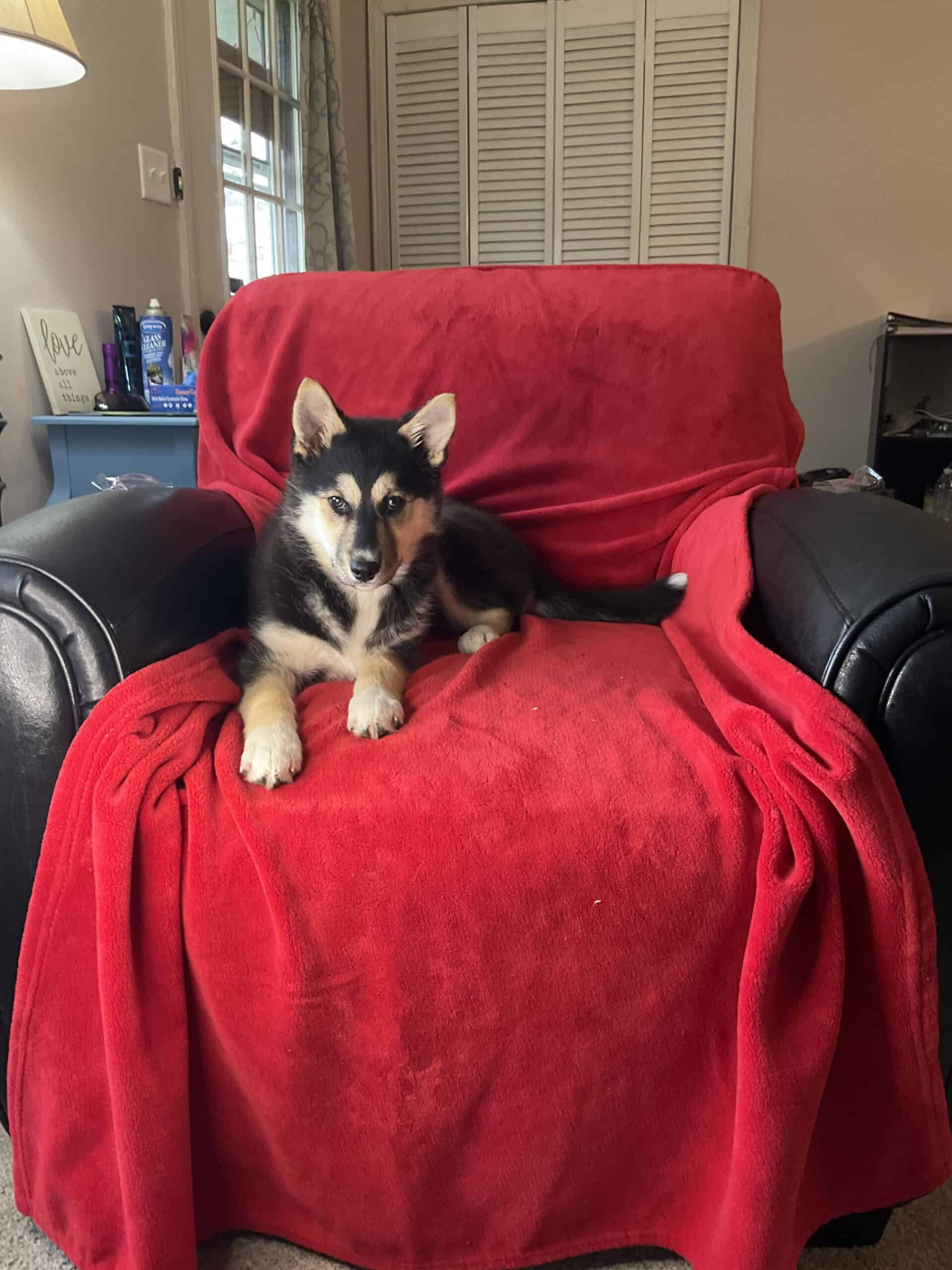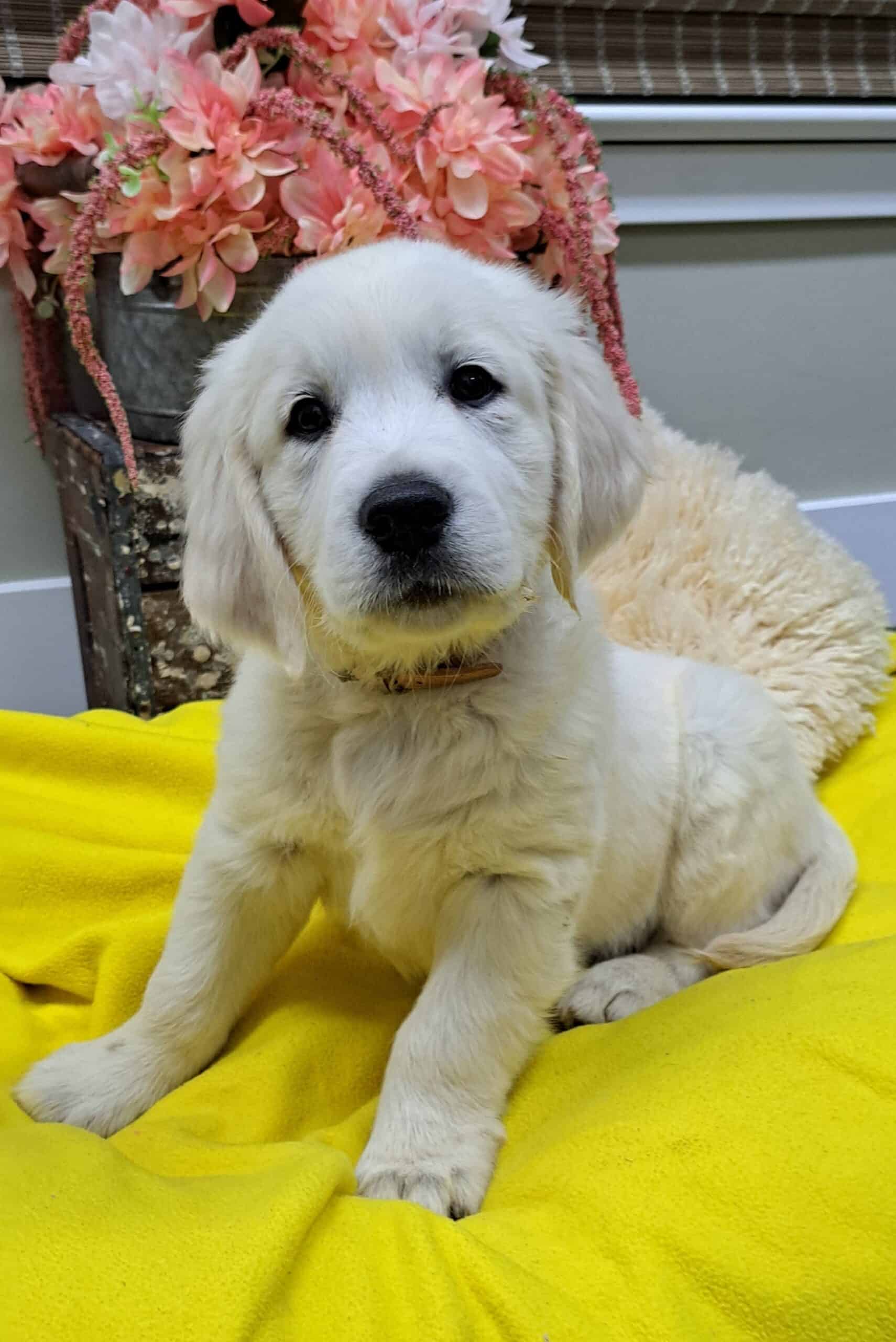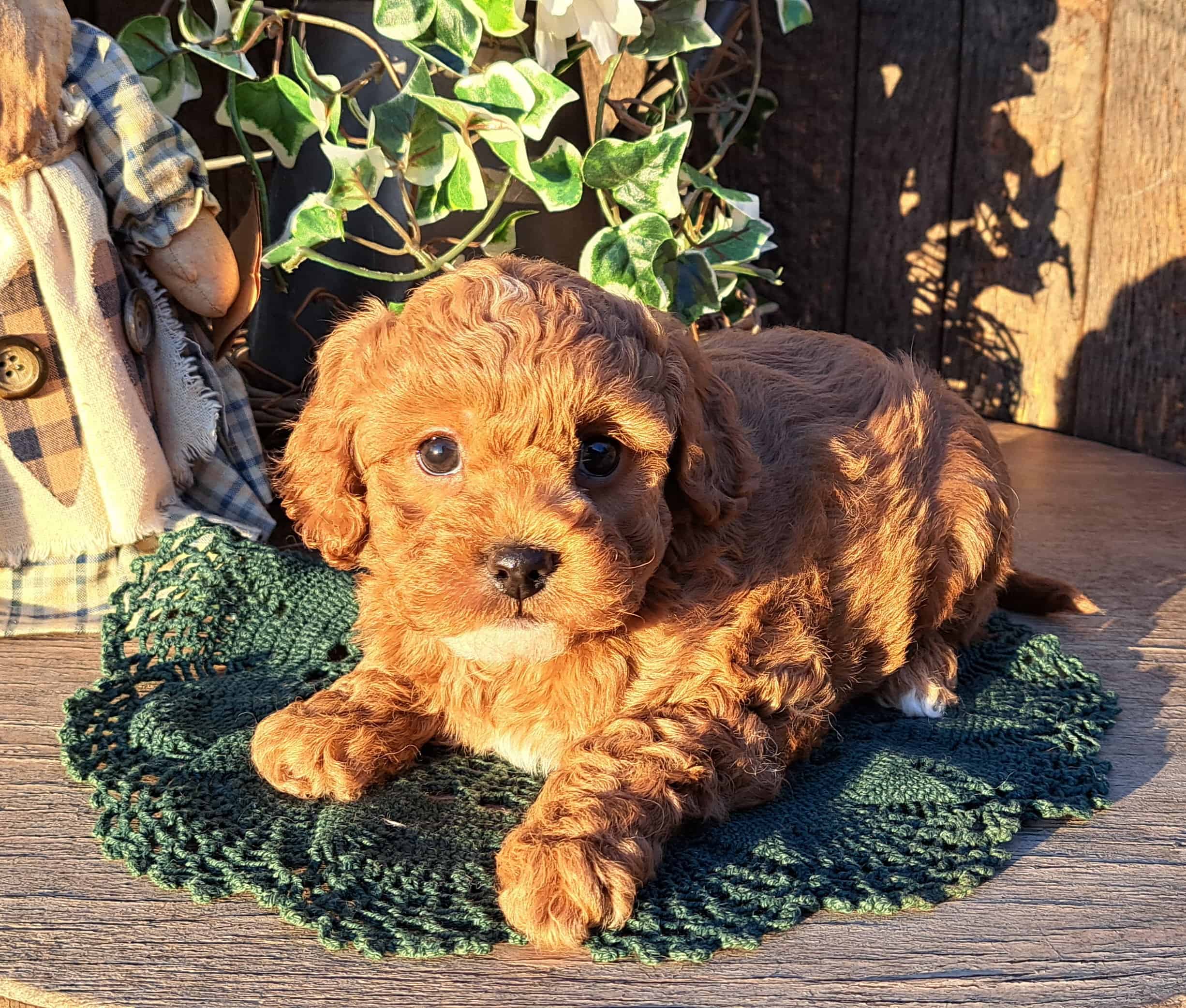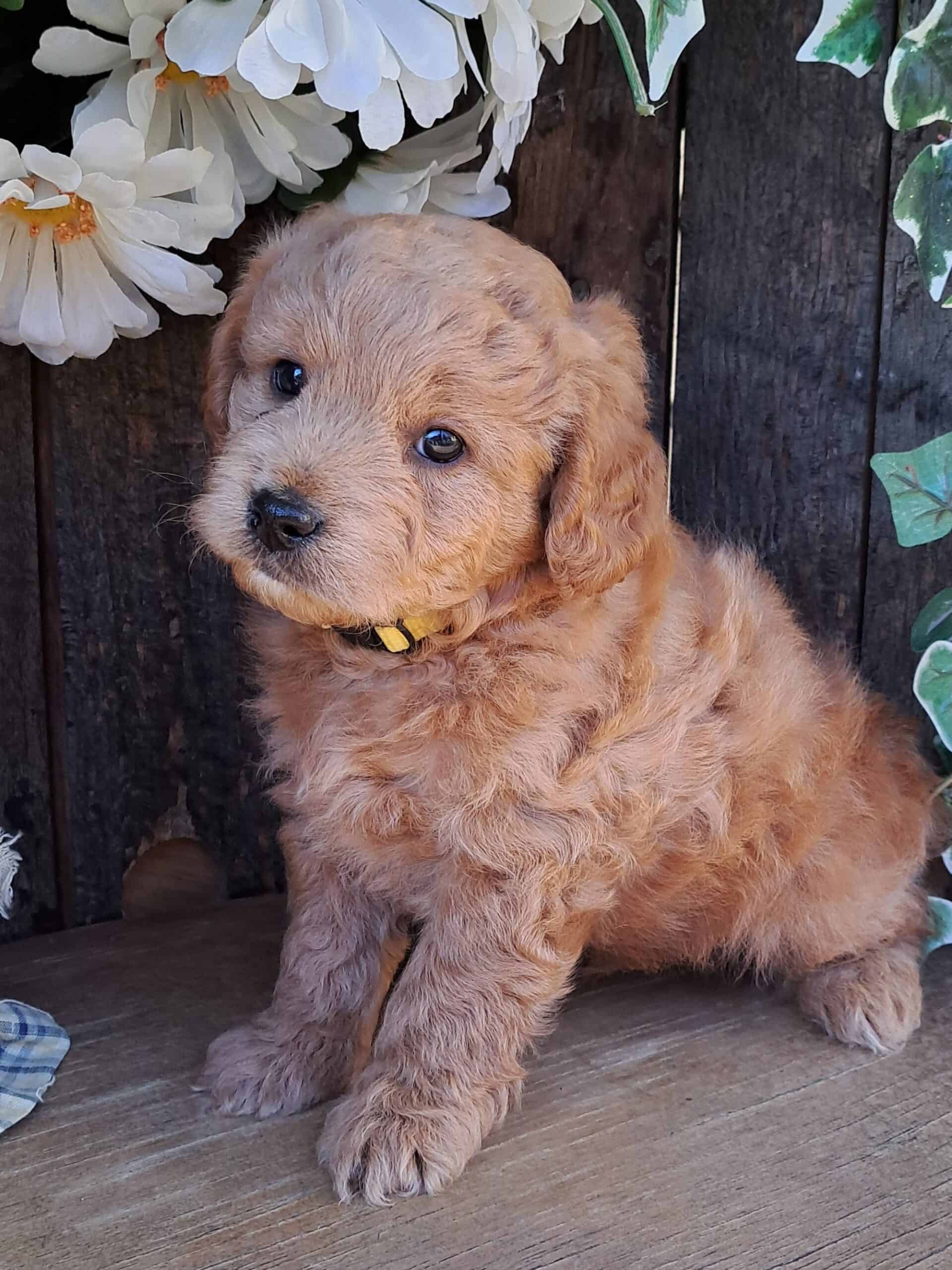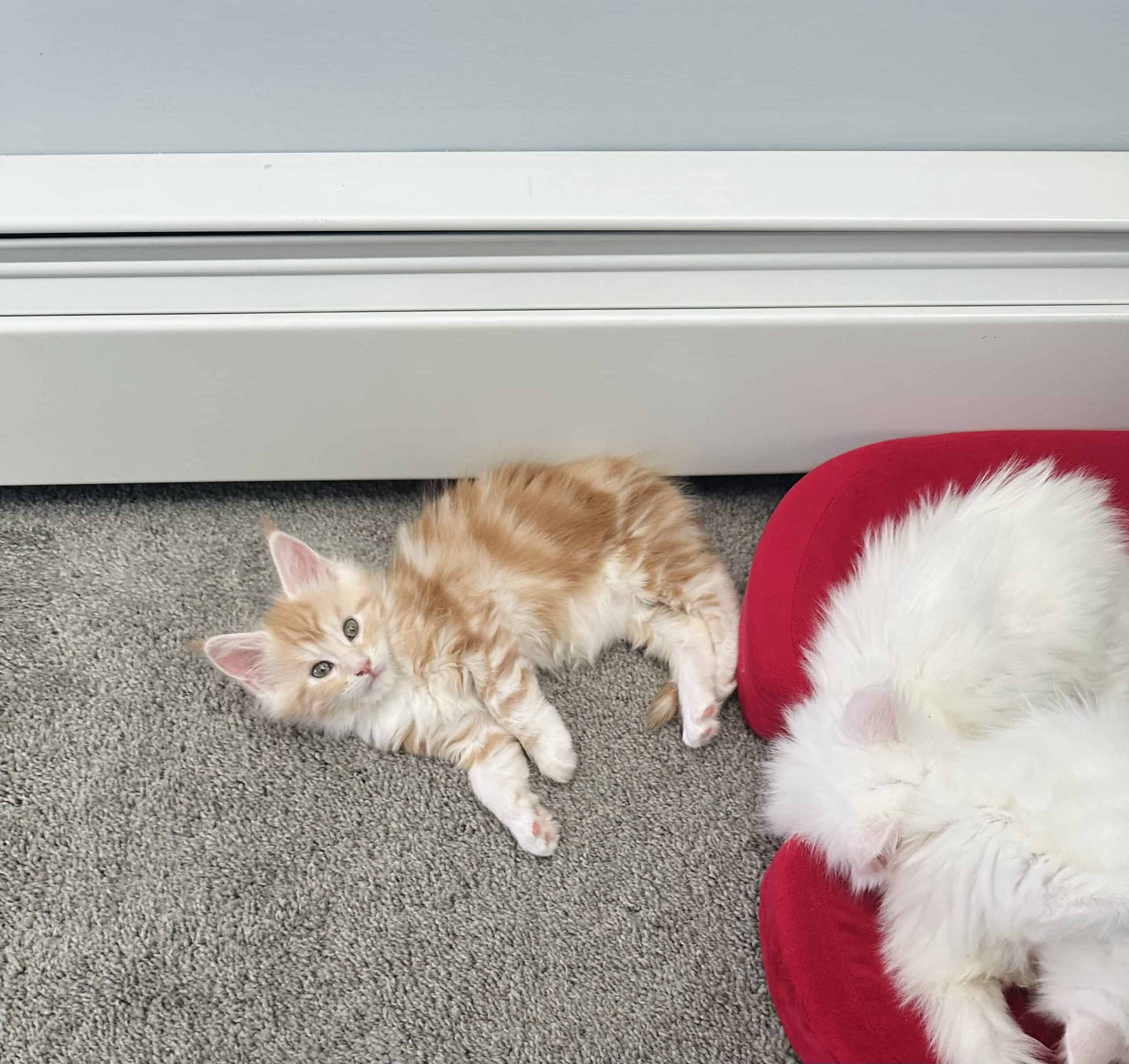Find local ads using radius search & price filter here. Or to filter for a specific breed.
There are so many Doodle breeds that there is one to fit almost personality type. Doodle dogs for sale are not for everyone, though, as they are high-energy dogs with demanding requirements for attention and exercise. However, they typically get along with children, other dogs, and even cats.
Overview
History
You may think the Doodle craze began with the Labradoodle. The first official Labradoodle was recognized with a cross in 1955, but the breed’s promotion as a guide dog in 1989 sealed its spot in pet owners’ hearts. However, the Doodle had its origins in the Cockadoodle, more commonly known as the Cockapoo. Cockapoos appeared by the turn of the 1950s or even earlier. They were popular as companion dogs in the US beginning in the 1960s. Nevertheless, it was once people learned about Labradoodles that the race was on to create all types of Poodle mixes. Dog owners that loved a particular breed’s personality were open to crossing it with a Poodle to acquire a hypoallergenic coat or a unique shaggy appearance. In the 2010s a shift has occurred whereby breeders utilize non-Poodle hybrids. However, the Doodle dog remains a vital and in-demand part of the pet community. Although major breed registries do not recognize Doodles, Australia has come close to legitimizing a consistent multigenerational line of Labradoodles.
Generations
Breeders often cross back frequently with Poodles to manipulate the hair texture and color of puppies. Most multigenerational Doodles have a high percentage of Poodle lines for the hypoallergenic market.
- F1: purebred Poodle x purebred second breed
- F1b: Doodle x purebred Poodle or other breed
- F2: Doodle x Doodle or Doodle x F1b
- F2b: F2 x purebred dog, usually a Poodle
An F2b dog can be over 85% Poodle.
Appearance of Doodle Dog for Sale
Doodles will vary in appearance because of the parent breeds and factors that affect a dog’s size and coat quality. Poodles commonly pass on the following characteristics that make Doodles have a recognizable look.
- Long, hanging ears
- Round, dark-colored, expressive eyes – eyes can be hazel, light brown, or amber in some mixes, but they have the soulful, deep, intelligent gaze of the Poodle
- Slight dome to the crown of the head
- Narrow and prominent bridge of the muzzle
- Pronounced stop and prominent brow ridge
- Coat usually medium-length with loose curls or strong waves; gives most Doodles a shaggy appearance
- Many but not all Doodles are compact with a body that is the same length as it is tall; Doodles often look leggy, but some are slightly longer than they are tall
- Medium-long, strongly put-together neck with sloping shoulders
- Long tail – Poodle’s tail is frequently in a long dock; Doodles have a natural tail that usually hangs just below the hock but is carried level with the topline or slightly above the back
- Back straight and level or slopes gently from shoulders to the hips
- Croup is slightly rounded
- Gait is fluid with a graceful and merry spring
Colors
A Doodle’s color relies largely on the second parent breed. For example, Goldendoodles are often golden to cream, and Labradoodles are frequently chocolate. You will see more about this under the description of the different Doodles. An important caveat is that when you breed a Doodle back to a purebred Poodle you can more easily obtain colors like solid black, silver, or phantom that you might not see in other breeds. Phantom is a color that designates a Poodle with points. Picture a Doberman or Rottweiler, both of which are tan-pointed dogs. A Poodle with those markings is called a phantom. Moreover, Poodles can have that pattern of points (above the eyes, across the chest, under the tail, on the legs) in cream, gray, silver, or apricot.
Personality
Doodle puppies for sale tend to be inquisitive, bright-eyed, and active. This changes little when they reach adulthood. Doodles carry additional subtleties of character from their non-Poodle parent, but most of them have several traits in common.
- Alert
- Devoted
- Affectionate
- Active – some breeds contribute a strong work ethic
- Highly intelligent
- Trainable
- Attentive
- Want to please
- Sensitive
- Extroverted and sociable
Doodles are generally good with children as most are mid- or large-sized dogs. Small Poodle crosses are usually Poos. Your Doodle dog should also be sociable enough to get along well with other dogs. Those without a strong prey drive or hunting background can also befriend tolerant cats.
Doodle Dogs for Sale Near Me
Like any other breed, healthy Doodle puppies for sale will be bright, active, and eager to explore the world around them. The breeder has likely handled the puppies a lot. Such pups are self-assured, and their social nature is already apparent. You can see an endless number of Doodle dog breeds.
Cockadoodle or Cockerdoodle or Cockapoo
- Breed: Cocker Spaniel
- Size: 9 to 18 inches tall, 10 to 25 pounds
- Colors: Phantom, silver, red, Black, cream, chocolate, parti (white with black or brown), or tricolor (black, brown, and white)
- Distinctive personality trait: sweet and companionable
Labradoodle
- Breed: Labrador Retriever
- Size: Standard (21 to 25 inches tall, 50 to 75 pounds), Medium ((17 to 20 inches tall, 30 to 45v pounds), Miniature (14 to 16 inches tall, 15 to 25 pounds)
- Colors: red, gold, black, cream, or chocolate; rare colors are sable, white with black parti, and merle
- Distinctive personality trait: gentle and happy
Goldendoodle
- Breed: Golden Retriever
- Size: Standard (20 to 25 inches tall, 50 to 90 pounds), Medium ((17 to 20 inches tall, 40 to 50 pounds), Miniature (16 to 18 inches tall, 35 to 49 pounds) Toy or petite (13 to 15 inches tall, 25 to 35 pounds)
- Colors: red, gold, black, cream, or chocolate; black is rare except in second generation crosses
- Distinctive personality trait: patient and trainable
Aussiedoodle
- Breed: Australian Shepherd
- Size: Standard (10 to 15 inches tall, 50 to 65 pounds), Miniature (9 to 13 inches tall, 15 to 35 pounds)
- Colors: Red or blue merle, tri-color (black and red with white markings), sable, black with tan points (phantom)
- Distinctive personality trait: Intelligent and amiable
Schnoodle
- Breed: Miniature Schnauzer
- Size: Standard (15 to 20 inches tall, 45 to 75 pounds), Miniature (13 to 15 inches tall, 15 to 20 pounds), Toy (10 to 12 inches tall, 6 to 12 pounds)
- Colors: gray, tri-color (black and tan with white markings), sable, black with tan points (phantom), silver, blue, red, parti-color, cream, or silver
- Distinctive personality trait: Stubborn and humorous
Bernedoodle
- Breed: Bernese Mountain Dog
- Size: Standard (23 to 29 inches tall, 50 to 100 pounds), Miniature (18 to 22 inches tall, 25 to 49 pounds), Tiny (12 to 17 inches tall, 10 to 24 pounds)
- Colors: black & white, tri-color (black and reddish-brown with white markings), sable, black with tan points (phantom), red & white, chocolate & white, or merle
- Distinctive personality trait: Loyal and hard-working
Huskydoodle
- Breed: Siberian Husky
- Size: 15 to 25 inches tall, 40 to 65 pounds)
- Colors: wolf gray, silver & white, red & white, black with white markings, apricot, or brown
- Distinctive personality trait: High-energy and playful
Bordoodle
- Breed: Border Collie
- Size: 12 to 22 inches tall, 30 to 55 pounds
- Colors: black & white, red & white, merle & white, chocolate & white, any solid color with minimal white markings
- Distinctive personality trait: Intense and protective yet friendly
Sheepadoodle
- Breed: Old English Sheepdog
- Size: 16 to 23 inches tall, 60 to 80 pounds
- Colors: black & white, gray & white, or solid black
- Distinctive personality trait: Sociable and even-tempered
Shepadoodle
- Breed: German Shepherd Dog
- Size: Standard (22 to 27 inches tall, 50 to 95 pounds), Miniature (15 to 21 inches tall, 25 to 49 pounds)
- Colors: black & white, gray, sable, black & tan, chocolate & tan, or solid black
- Distinctive personality trait: Loyal and polite
Other Doodle Dogs Not Mentioned
- Rottie Poo – Rottweiler
- St Berdoodle – St Bernard
- Pyredoodle – Great Pyrenees
- Whoodle – Soft-Coated Wheaten Terrier
- Westie Poo – West Highland White Terrier
Mini Doodle Dogs
A Miniature Doodle can reference a size variety of a Poodle mix that frequently is marketed to various demands. For example, people split evenly in their preferences for large and tiny Labradoodles and Goldendoodles. The phrase “Mini Doodle dogs” also accurately describes consistently undersized individuals. Specifically, it designates the offspring of two Toy-sized parents. Fanciers will frequently refer to a miniature Doodle dog for sale as a Poo. A Mini Doodle is particularly susceptible to chronic low blood sugar levels (hypoglycemia), hip and knee issues, and overworked heart and kidneys. A non-exhaustive list of Mini Doodle dogs follows:
- Maltipoo – Maltese
- Shihpoo – Shih Tzu
- Havapoo – Havanese
- Cavapoo – Cavalier King Charles Spaniel
- Jackapoo – Jack Russell Terrier
- Yorkipoo – Yorkshire Terrier
- Chipoo – Chihuahua
- Poochon – Bichon Frise
- Doxypoo – Dachshund
Lifespan
Regardless of the variety, most Doodle dogs for sale live 12 to 15 years.
Care of Doodle Dog
Your Doodle dog needs a moderately intense time commitment. Coat type determines how much your dog will shed and how often you should brush her. Straighter hair needs a biweekly brushing. Curlier fur needs to be brushed or gently combed four times a week to every day. Meantime, you should also bathe your dog every four to eight weeks and trim his nails at the same time. Brush his teeth, check his ears, and wipe the boogers out of his eyes daily. Doodles tend to be low-shedding, low-drooling dogs, enhancing their hypoallergenic qualities. Toy and mini Doodle dogs require 45 to 60 minutes of daily exercise. Medium- and large-sized dogs should get 90 to 120 minutes of exercise split over two or more sessions. Avoid temperatures above 87 degrees Fahrenheit or below 30 degrees Fahrenheit. Also, dogs should not exercise when the humidity is above 85%. Doodle dogs require a lot of mental stimulation and learning opportunities as well as some periods of rigorous energy-burning activities. They are well-suited for agility and competitive obedience.
Feeding
All dogs require a protein-based diet with high-quality meats. Most also benefit from some plant materials such as leafy greens and berries. Other requirements are fats or oils, vitamins, and trace minerals. Doodles should eat at least two meals a day, especially if you feed commercial diets. Splitting food portions may help lower the chances your dog bloats.
- Adult active – 25 to 30 calories per pound of body weight
- Toy or Miniature Adult – 28 to 35 calories per pound
- Puppy under 6 to 12 months old – 44 to 90 calories per pound
- Seniors – 20 to 23 calories per pound
- Working – 75 to 100 calories per pound
- Lactating and pregnant – 50 to 90 calories per pound
- Fresh or raw diets – puppies (4 to 10% of body weight per pound depending on age), adults (2% to 6% of body weight depending on activity levels; most dogs 2.5% of body weight daily)
Training
Doodles are a friendly group with appropriate socialization. They are intelligent and willing to please, making them easy to train with a few exceptions. Terrier mixes often inherit a stubbornness and tenacity that make them willful and single-minded. They can also have an unusually high prey drive. Toy Doodles can be difficult to housetrain because of an exceedingly small urinary bladder. The Doodle dog tends to be sensitive and only responds to consistent leadership, kindness, repetition that is not too tedious, and patience.
